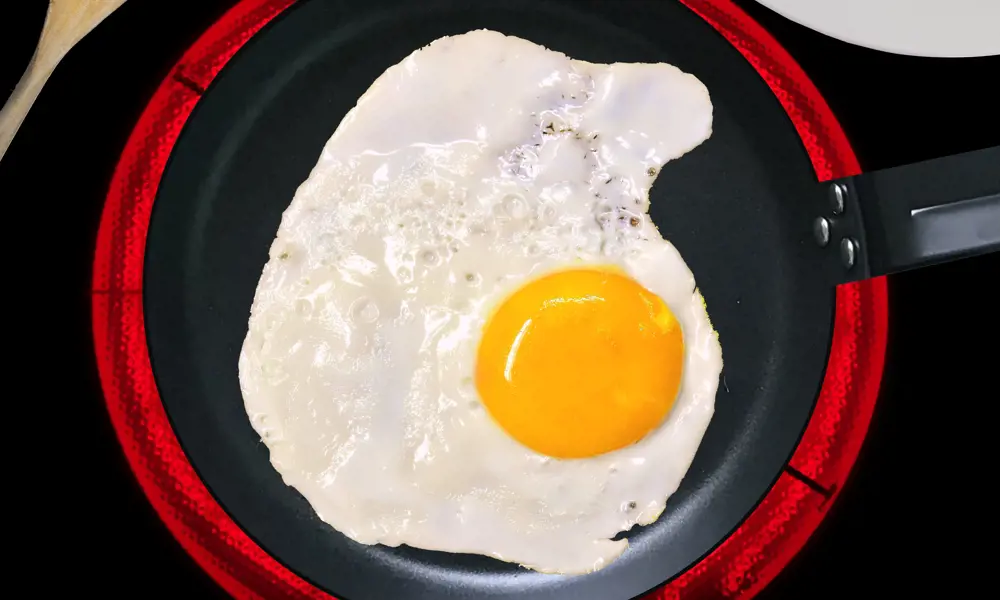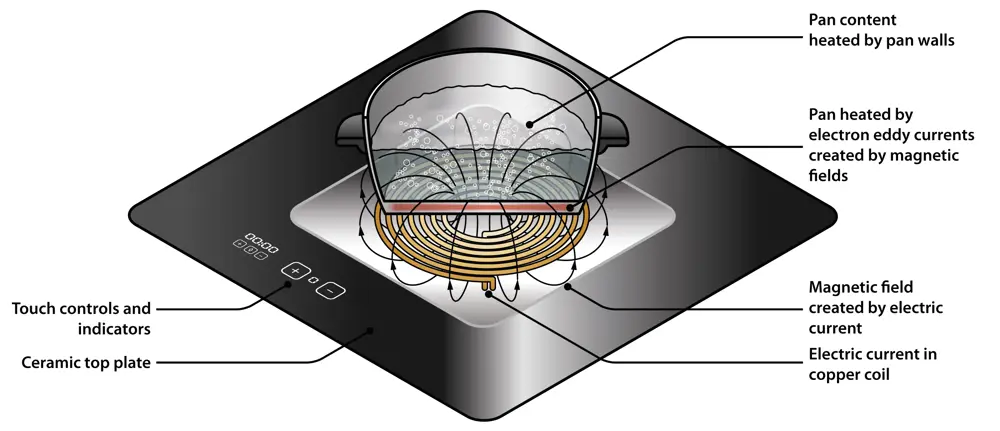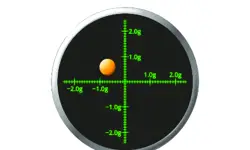
Induction hobs
Kitchens come in all shapes and sizes but you almost certainly have some sort of cooker at home. If you have a gas or electric cooker, it’s probably quite obvious how it heats your food. A gas cooker creates a flame and the heat from that flame is transferred to the pan that you’ve placed on top of it, heating the food inside. With an electric cooker, the hob itself heats up and again you have a transfer of heat from the hob to the pan. In both cases, the hob itself gets very hot and this heat is then used to heat the pan. But what about induction cookers, which heat the pan directly rather than the hob?
An induction cooker has a ceramic surface, topped with glass, beneath which are four coils of copper – one for each hob. When a hob is turned on, electricity runs through the coil and this generates an electric field. The French physicist Ampere discovered that whenever and wherever you have an electric field, you also have a magnetic field, and that you cannot have one without the other. At this point no heat is being generated because on induction cookers, the pan generates the heat rather than the hob. It relies on induction, a concept discovered by Michael Faraday FRS. He found that when he wrapped two wires close together and sent an alternating electrical current through one of them, an electrical effect was measured in the second wire. This is what is happening with an induction cooker.

Copper coils inside an induction hob heat the pan, rather than the surface of the hob, through a magnetic field created by an alternating electrical current © Shutterstock
When you put an iron-based pan on top of the glass, the magnetic field generates electric fields in the iron in the bottom of the pan. Since iron is not a very good conductor of electricity, it heats up and this is where the heat that cooks the food comes from. Although switched on, the hob will stay cool until a pan is placed on top; however, the pan does then heat up the hob and it will take time to cool after the pan is removed. It only works with pans that have iron in them; pans made of copper, for example, will not heat up because copper conducts electricity too well. The easiest way to check if a pan contains iron is to use a magnet, which will stick to the pan if it contains iron.
The easiest way to check if a pan contains iron is to use a magnet, which will stick to the pan if it contains iron
Safety tests have been carried out to see if the magnetic field has any impact on items that will potentially be nearby, such as rings on fingers and pacemakers. The British Heart Foundation advises that people with pacemakers should keep a distance of at least 60 centimetres from an induction hob while it is on, as it can interfere with the device, or avoid them completely.
Because the heat comes from the pan itself rather than the stove, heat is evenly spread throughout the pan making cooking more efficient – induction hobs can heat a pan of water to boiling point in half the time of a gas-powered one. The lack of heat on the hob itself means that food doesn’t burn onto the surface when it boils over, so the surface is easy to clean.
To learn more about the engineering marvels hidden in your home, watch Rhys discuss induction hobs and other engineers’ videos on Twitter at @QEPrize. The videos are part of the QEPrize’s #EngineeringInspiration video campaign, celebrating the launch of the 2021 QEPrize nominations.
***
This article has been adapted from "How does that work - Inductions hobs", which originally appeared in the print edition of Ingenia 83 (June 2020).
Contributors
Rhys Phillips is an ambassador for the Queen Elizabeth Prize for Engineering (QEPrize). He has spent over 10 years working in electromagnetics research topics at Airbus and is also Senior Vice President of Public Relations for European Young Engineers. Follow him on Twitter @rhys_phillips
Keep up-to-date with Ingenia for free
SubscribeRelated content
Electricals & electronics

Accelerometers
Used in earthquake measurements, laptops, planes and even in stargazing apps, today’s accelerometers are much smaller than when they were first developed in 1927. Find out how they detect movement and vibration.

How to maximise loudspeaker quality
Ingenia asked Dr Jack Oclee-Brown, Head of Acoustics at KEF Audio, to outline the considerations that audio engineers need to make when developing high-quality speakers.

Cable fault locator
The winner of the Institute of Engineering and Technology’s 2014 Innovation Award was EA Technology’s CableSnifferTM, which uses a probe and chemical sensing technology to identify faults, saving energy companies millions of pounds each year.

High speed evolution
In December 2010, Eurostar International Ltd awarded a contract for 10 new high speed trains to Siemens. The company has used a system developed over decades to maximise the performance and passenger-carrying ability of its 320km/h trains.
Other content from Ingenia
Quick read

- Environment & sustainability
- Opinion
A young engineer’s perspective on the good, the bad and the ugly of COP27

- Environment & sustainability
- Issue 95
How do we pay for net zero technologies?
Quick read

- Transport
- Mechanical
- How I got here
Electrifying trains and STEMAZING outreach

- Civil & structural
- Environment & sustainability
- Issue 95